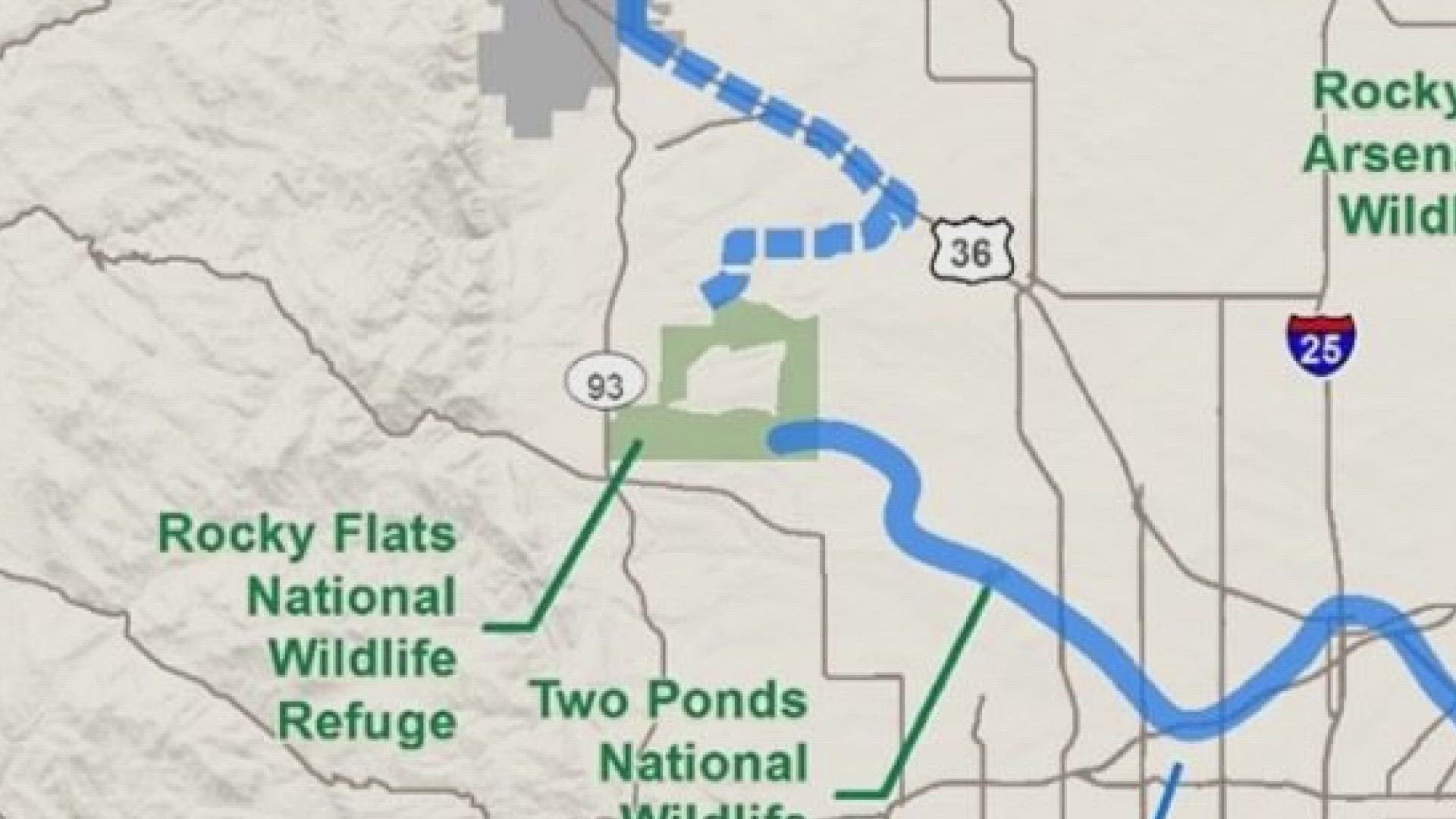JEFFERSON COUNTY, Colo. — On the east side of Rocky Flats National Wildlife Refuge, construction activity is turning heads.
U.S. Fish and Wildlife workers are using bulldozers to clear dirt in an area of a proposed bridge to connect the former nuclear weapons site to Westminster Hills Open Space.
The bridge is a major cog in plans for the Rocky Mountain Greenway, which aims to build trails to connect Rocky Mountain Arsenal National Wildlife Refuge with Rocky Mountain National Park.
David Wood lives near Rocky Flats and said he’s excited to see the construction in progress.
“I definitely support it,” Wood said. “The alternative is to try and have people cross Indiana [Street] on their own without a bridge.”
But the project received pushback from some people concerned with more development at Rocky Flats, which has been the focus of health concerns since closing in the early 1990s.
“It’s a bad idea all the way around,” said Jon Lipsky. “This pedestrian bridge is essentially going to be planted, abutments and piers, in the most contaminated areas of that property.”
The U.S. Atomic Energy Commission operated a plant at Rocky Flats starting in the 1950s that manufactured, among other things, plutonium triggers for nuclear weapons. In 1989, the facility’s mission turned to cleanup, which was completed in 2005. The refuge opened for recreational activities in 2018.
Lipsky is a former FBI agent who was involved in raids at the property in 1989. He said he remains concerned about health impacts associated with the site and is now involved in a federal lawsuit asking U.S. Fish and Wildlife halt construction.
“I have a lot of concern about the residences out here,” Lipsky said. “Because when these roads and overpasses are planted, it’s going to kick up dust.”
Wood said those concerns are misguided and said statistics show the site is not dangerous.
“Just knowing what’s in the soil is enough to tell you that you can’t possibly get a dose big enough to worry about,” Wood said. “That’s what people don’t get. It’s a tiny, tiny amount, and the focus on that has basically infantilized the discussion around Rocky Flats for the last 30 years.”
U.S. Fish and Wildlife declined to comment on the construction to 9NEWS Friday, but did say they’ll provide more information Monday.
More 9NEWS stories by Evan Kruegel:
SUGGESTED VIDEOS: Latest from 9NEWS

